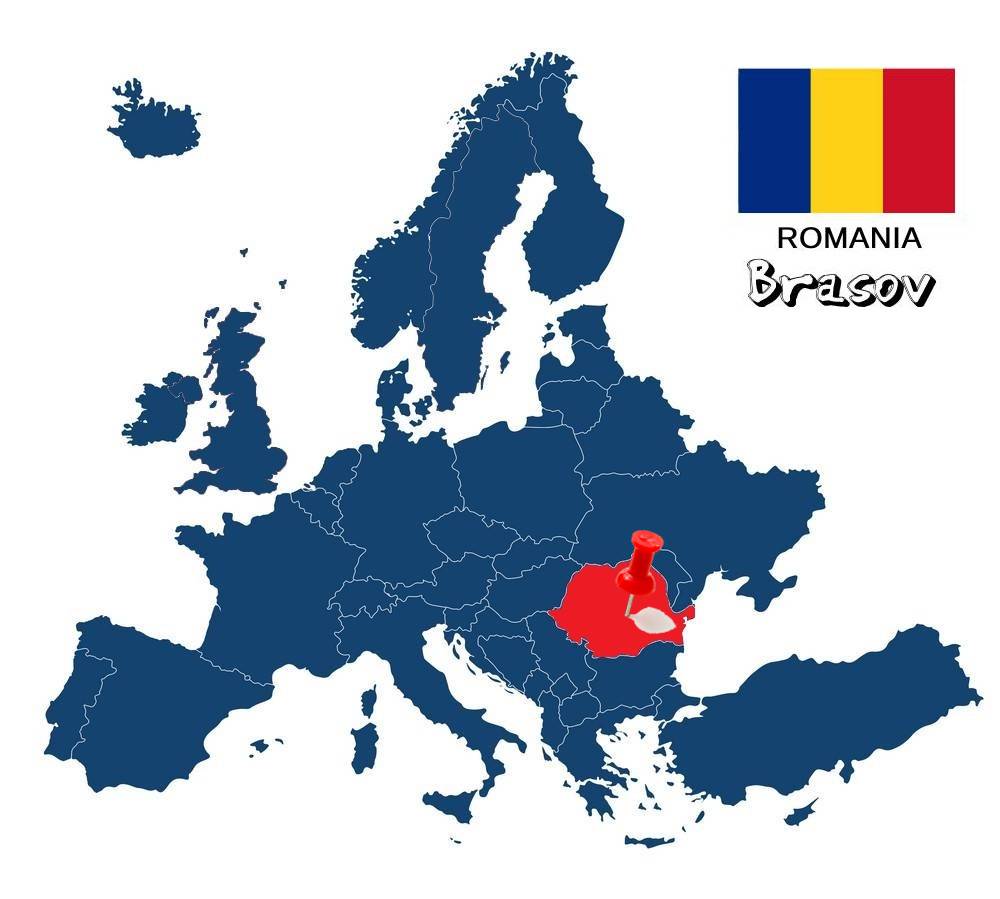
This attractive town in the Southern Carpathians has a different air. It has a beautiful, charming and well-preserved medieval old town, many attractions and welcoming people, which will surely make you fall in love with it!
A few words about the city
Brasov is a city in central Romania, which is the seat of the province of the same name. It is surrounded by the Carpathian Mountains and belongs to the Transylvania region and most of you may know it as the town of Count Dracula. According to the latest Romanian census, its population is estimated at 253,200 people within the city and at 369,896 in the wider metropolitan area, making it the 7th most populous metropolis in Romania! The city is first mentioned in 1235 under the Latin name Corona, given to it by German settlers, while the name Brasov seems to have come from the local river Birsa. Brasov is widely known as the birthplace of the Romanian national anthem and the venue of the Golden Stag International Music Festival. So I will try to present Brasov to you through my own eyes and share with you what I think a first-time visitor should see.
Piata Sfatului
The Council Square (Piata Sfatului) is undoubtedly the heart of the medieval historical center of Brasov. It is made in the shape of a square and is surrounded by impressive and colorful buildings, which will make you not know where to look first. In the past, this square had a dark past, since it was used as a place of public trials and executions during the Middle Ages. Then in the years of communist rule, the Council Square was also used as a parking lot to discourage city dwellers from congregating and socializing. Today, of course, all that is in the past. In the centre of the square the clock tower from the 13th-century Town Hall (Casa Sfatului) rattles, momentarily drowning out the chatter and clink of glasses from nearby cafes. Children hunt pigeons, while visitors capture this brilliant scene with their phones or photographs!

Oras vechi
One of the best things to do in Brasov is simply to wander around the Old Town (Oras vechi) and enjoy the lively atmosphere it exudes. Many of the streets there are pedestrian streets, full of small shops, restaurants and cafes that invite you to sit down and watch a bit of the world. Set aside the gps and get lost following your intuition. You will probably find some hidden passages or architectural ornaments, which you will not see in any travel guide! The Old Town of Brasov is really the most charming part of the city, and it is so easy to fall in love with it.
Biserica Neagra
Just outside the city's main square, you will find one of Eastern Europe's largest Gothic architecture projects. I refer, of course, to the Black Church (Biserica Neagra), which was constructed by the German community of Brasov during the 15th century. About a century later it was converted from a Catholic to a Lutheran Church, a change that is valid to this day. Just outside the church is a statue of Johannes Hodder, the Transylvanian Saxon humanist who brought Lutheranism to the area. Plus, inside the temple you will be impressed by the 15th century sculpture on the northern facade and more specifically the relief of Jesus in the second temple of Jerusalem. And from the same period inside there are brocaded vestments, chalices, baptisms and a fresco depicting the Annunciation of the Virgin. Admission costs 15 leu, which is about 3e.
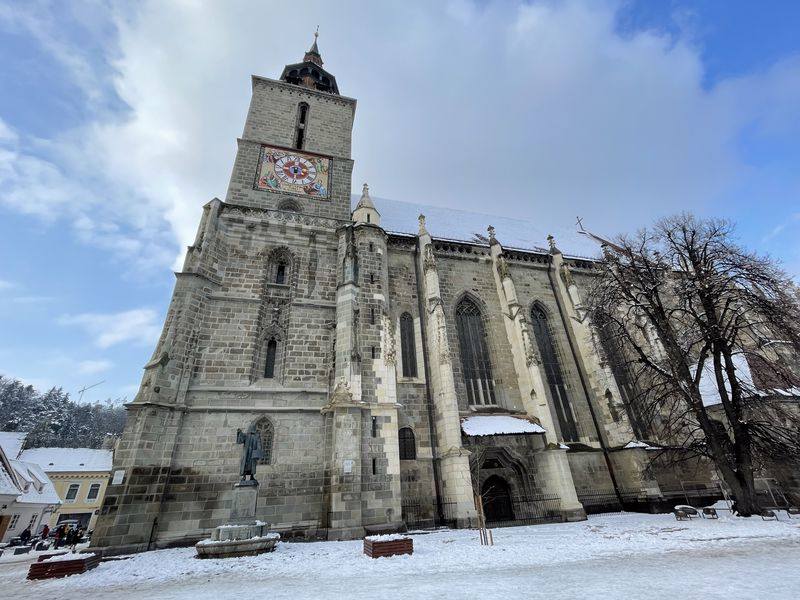
Muntele Tampa
As soon as you set foot in Brasov, you will notice a huge, Hollywood-like "BRASOV" sign perched high above the city on Mount Tampa (Muntele Tampa). Mount Tampa is part of the Postavarul mountain range, located in the southern part of the Eastern Carpathians and has an elevation of 960 meters. If you like hiking and, of course, the weather allows it, it is worth following one of the many trails to the top. This is an easy but demanding route that will take you about an hour to complete. If your slopes seem a little too demanding, there is always the option of a cable car, which will lift you to the top in just three minutes. Whichever of the two options you choose, the only sure thing is that the view of the city from there will impress you.
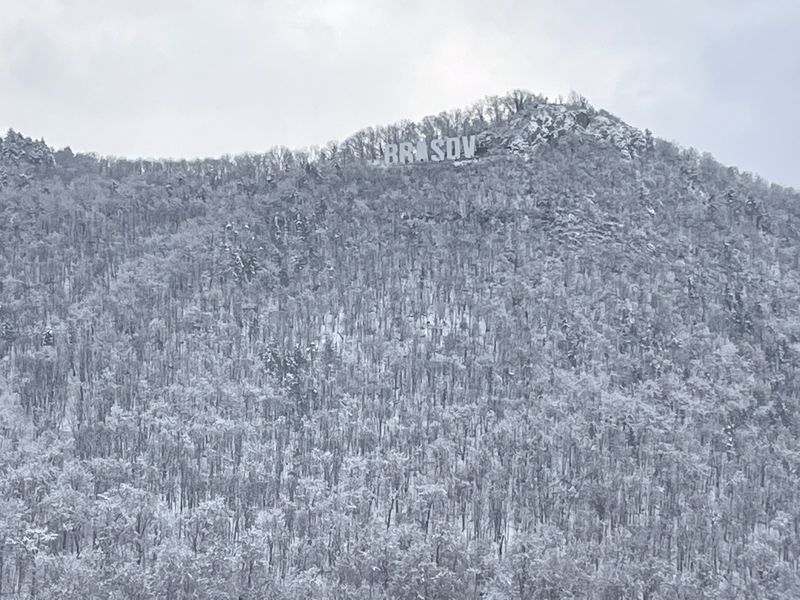
Bastionul Țesătorilor
Under Mount Tampa, on the south side of the old town, you'll find what's left of Brasov's old fortifications. In the 1500s, the town’s guilds were responsible for taking care of the city's defenses by keeping attackers at bay. This particular tower is called Bastion of the Weavers (Bastionul Țesătorilor), since as you understood it was in the hands of the weavers. But apart from this use, the specific bastion also served the weavers as a place to store their products. The oldest parts of the fortifications date from the 1420s, while an additional floor was added in the second half of the 16th century. Inside there is a museum with details about the Weavers' Guild, Ottoman weapons, pistols and a scale model of the Hungarian era from 1896, depicting the city as it would have looked in 1600. Entrance costs 7 leu, which is about 1.5e.
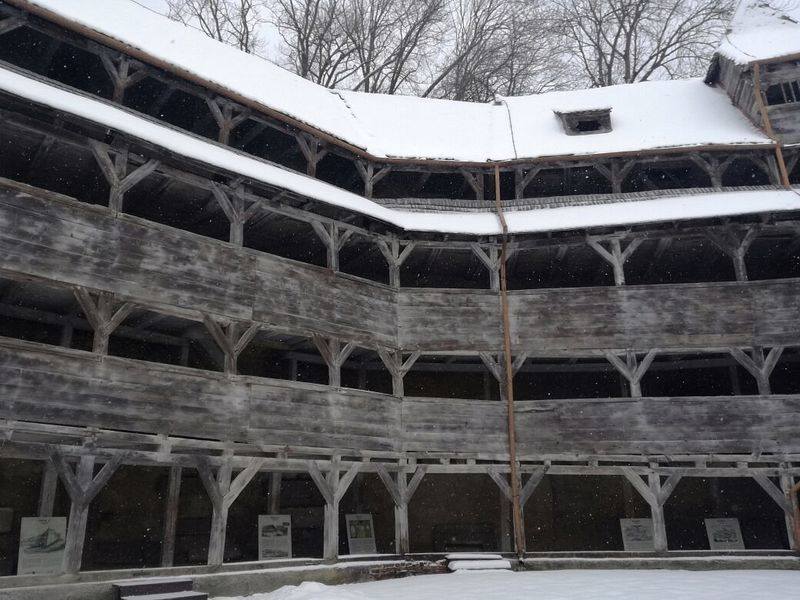
Poarta Ecaterinei - Șchei Gate
The only medieval gate of the city that has remained to this day is the gate of St. Catherine Gate (Poarta Ecaterinei), dating from 1559! It was constructed for defensive purposes but also as a toll gate and replaced an earlier gate destroyed by a flood a few years earlier. Its architecture is truly extraordinary, since it looks like it is taken from a fairytale and is a great testament to the long history of Brasov and its grandeur in medieval times. The area around St. Catherine's Gate is a breath of greenery where you can relax a little in the shade of tall trees before continuing to tour the rest of Brasov's sights. Since the gate was quite narrow and could barely accommodate a horse and cart, in the early 19th century it was replaced by the nearby Schei Gate. A walk in this neighborhood is in itself a history lesson, which will help you better understand the history and culture of Brasov, as well as the whole of Romania!
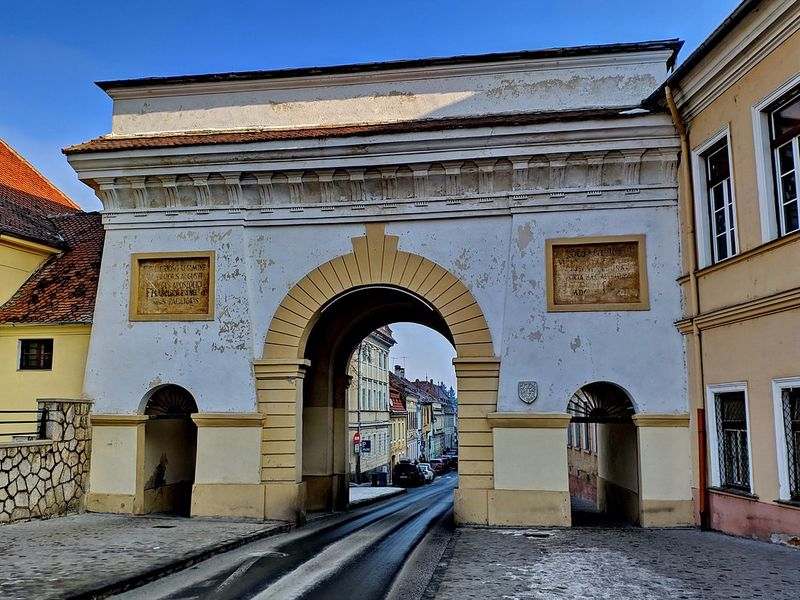
Prima școală Românească
Very close to the Schei gate, you will find another attraction which is considered very important for the Romanian people. I refer, of course, to the first school (Prima þcoală Românească), where classes were taught in Romanian. It was housed in the 16th-century Church of St. Nicholas (Biserica Sfântul Nicolae) from 1583, and the school was in use until 1941, before becoming a museum shortly after the war! Inside the museum there are more than 4,000 books and 30,000 historical documents, which also has Romania's first printing press. Guided by an elderly janitor, you will see the first Romanian Bible, as well as volumes of valuable first editions, the oldest document of all being a manuscript dating to the 11th century! Admission costs 10 leu, which is about 2e.
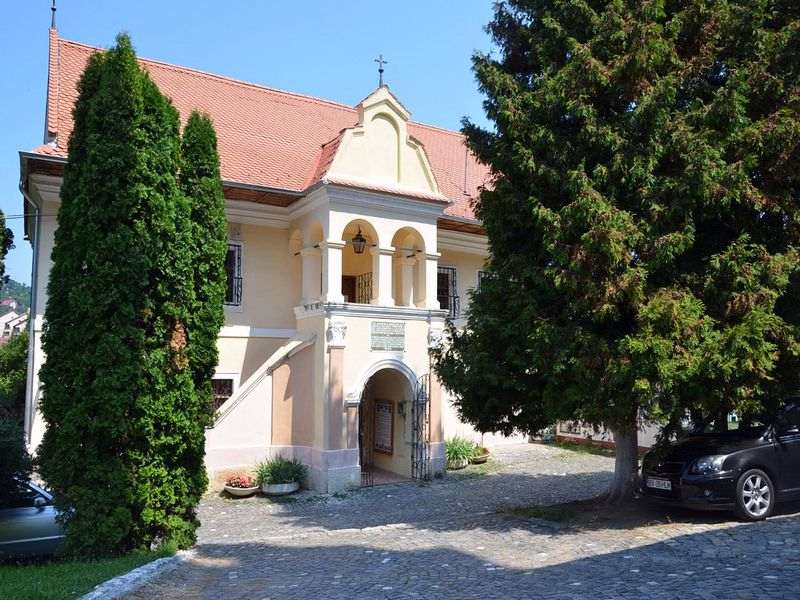
Synagogue
Brasov has had a Jewish community since 1807, when its first members settled in the city. At the beginning of the Second World War, the community had over 4,000 members, while today it has only 230 inhabitants. The Orthodox Synagogue of Brasov was a victim of the dictatorship of Ion Antonescu in the Second World War, it suffered a lot of damage, but it was never completely destroyed, and it was also used as a gymnasium. With neo-Moorish and neo-Byzantine design and an impressive scale, this particular synagogue was considered at that time the most impressive in Europe, more expensive than the synagogue in Szeged, Hungary! The architect of the building was the Hungarian, Lipót Baumhorn, who designed more than 20 synagogues in Austria-Hungary! Entrance to the Synagogue costs 5 lei, which is about 1e.
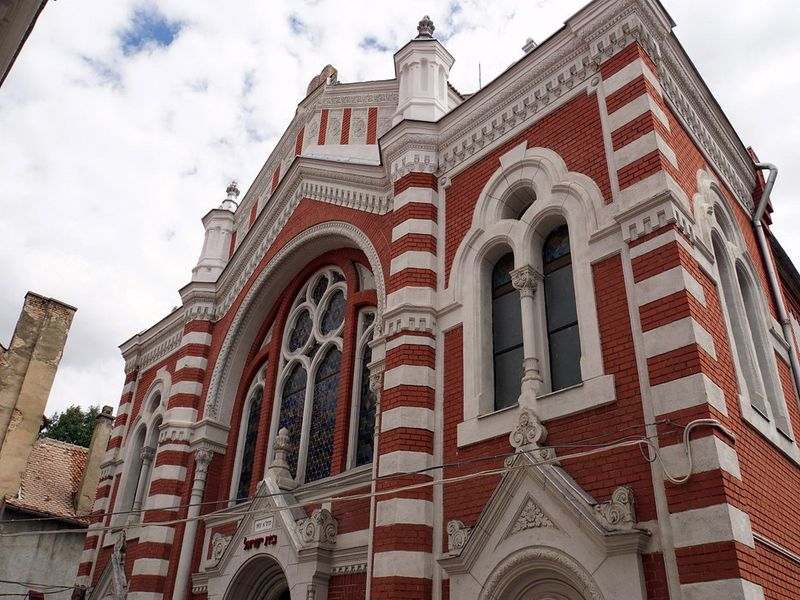
Strada Sforii
Of course, when you are in Brasov, you should not miss a walk on one of the narrowest streets in Europe, the Strada Sforii. It is the third narrowest street in Europe, behind only Spreuerhofstraße in Reitlingen, Germany and Parliament Street in Exeter, England. It dates back to the 1600s and is only 111cm long, which means you can't stretch your arms out and of course it only fits one person at a time! The oxymoron with this alley is that it was not originally designed for everyday use, but as an emergency route for firefighters in the Old Town.
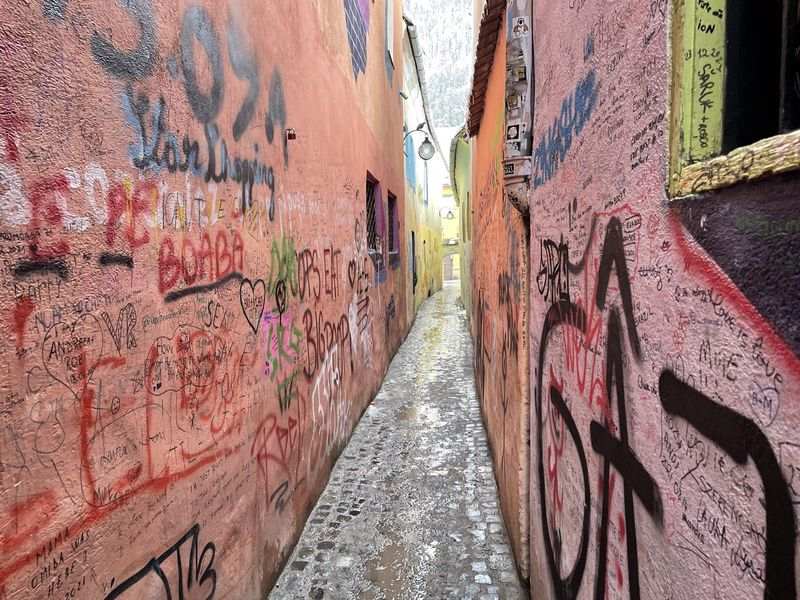
Museums
In Brasov there are many museums and art spaces that deserve special attention, but two stand out! The first of these is the Museum of Urban Civilization (Muzeul Civilizației Urbane), which is located in the heart of the Old Town on the south side of Council Square. This museum is a historical monument, representative of the typology of commercial, public and private spaces in Transylvanian cities between the 16th and 19th centuries. In a few words, you will see what the commercial buildings of the area were like and how people lived two centuries back. Admission costs 9 leu, which is about 1.80e.

The second museum worth visiting in the city is the Art Museum of Brasov (Muzeul de Artă Brașov), located near the park Nicolae Titulescu. There you will admire over 4500 works of art (oil paintings, graphics, sculptures, decorative arts, pictures, tapestries, oriental carpets, etc.), representative specimens for modern and contemporary Romanian art, as well as Transylvanian art from the 16th to the 20th centuries. And to this museum admission costs 9 Leu, that is, about 1.80e.
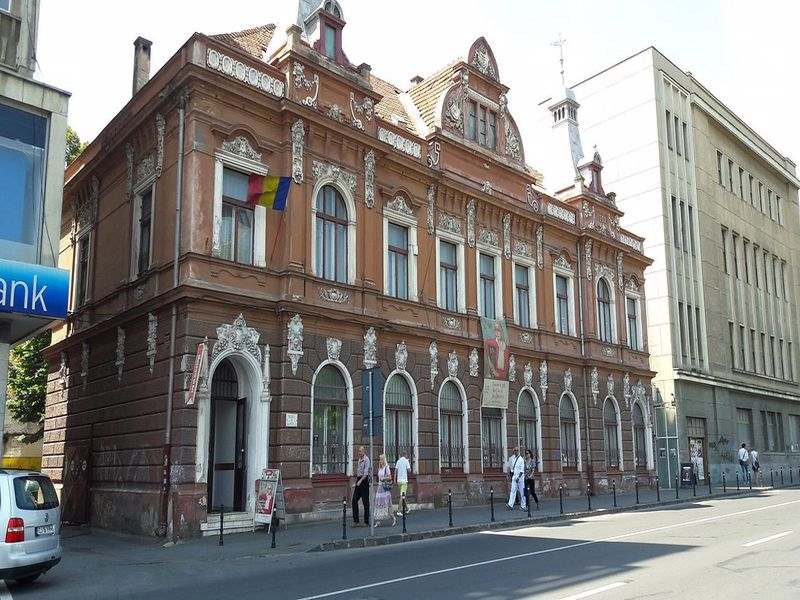
How to go
In Brasov there is no airport, so if you want to visit the city you must first go to another Romanian town. The most economical and flexible option comes from Ryanair, where with proper planning one can find tickets starting from 15€ round trip! From there you can go to the city either by bus or rent a car, which will save you both time and money!
Where to stay
Brasov is a relatively small town, where everything is located close to its historical center; this means that it would be better to find a hotel or apartment, as centrally as possible. The accommodation I have to recommend is Casa Wagner, located in the heart of the old town and more specifically in the pedestrian area of Council Square, overlooking the famous Black Church and Mount Tampa. It has fully renovated rooms, which have retained their traditional features, while at the same time providing all modern amenities.
How to move
Being in Brasov, you probably won't need to use public transport, as all the attractions are in the city center and easily accessible with a short walk. But if your hotel is in the suburbs or if you want to reach a place outside the Brasov border, the city has an excellent public transport network, with buses and trolleybuses.
What to eat
Romanian cuisine is a mixture of different cuisines, but has its own special character. It is the result of a crossroads of cultures and reflects the history of the country, which over the years has been under Greek, Roman, Turkish and Austro-Hungarian yoke, while other countries such as France, Italy, Poland and Russia have also had an influence on its language and culture. It has also been influenced by the cuisines of neighboring nations, such as Bulgaria, Germany, Serbia and Hungary. Some of the most traditional dishes of the region are Mamaliga, which is a porridge made of yellow maize flour, Mititei (spicy sausages), Sarmale (cabbage rolls), all kinds of soup, usually served in bread, pork shanks, pickles and sweets Papanași, which is the Romanian donut and Mucenici, which is something like sweet buns. To get a solid dose of Romanian cuisine and culture, I suggest visiting La Ceaun-Weiss.
Useful information

In Romania we travel with a passport or a new type of Police ID, where the details are written in Latin characters.
In Romania the language used is, of course, Romanian. But the majority (especially young people) speak English, so ask for clarification in English.
The country's currency is the Romanian Leu (RON) and its rate is currently 1€ = 4.95 Leu.
Brasov has the same time as Greece (GMT +2).
In Brasov there is no Greek embassy or consulate so if you need anything you should contact the nearest one, located in Bucharest at 1-3, Pache Protopopescu and its phones are +4021 2094170-4.
The best time to visit Brasov I would say is spring or early autumn, when everything is in bloom and it is not too cold.
Recommended tours → Sinaia, Bran, Bucharest

If this article seemed interesting or contributed to your quality information, then you can like my facebook page: o_thessalonikios or follow me on instagram!
Mouzakidis Pantelis








